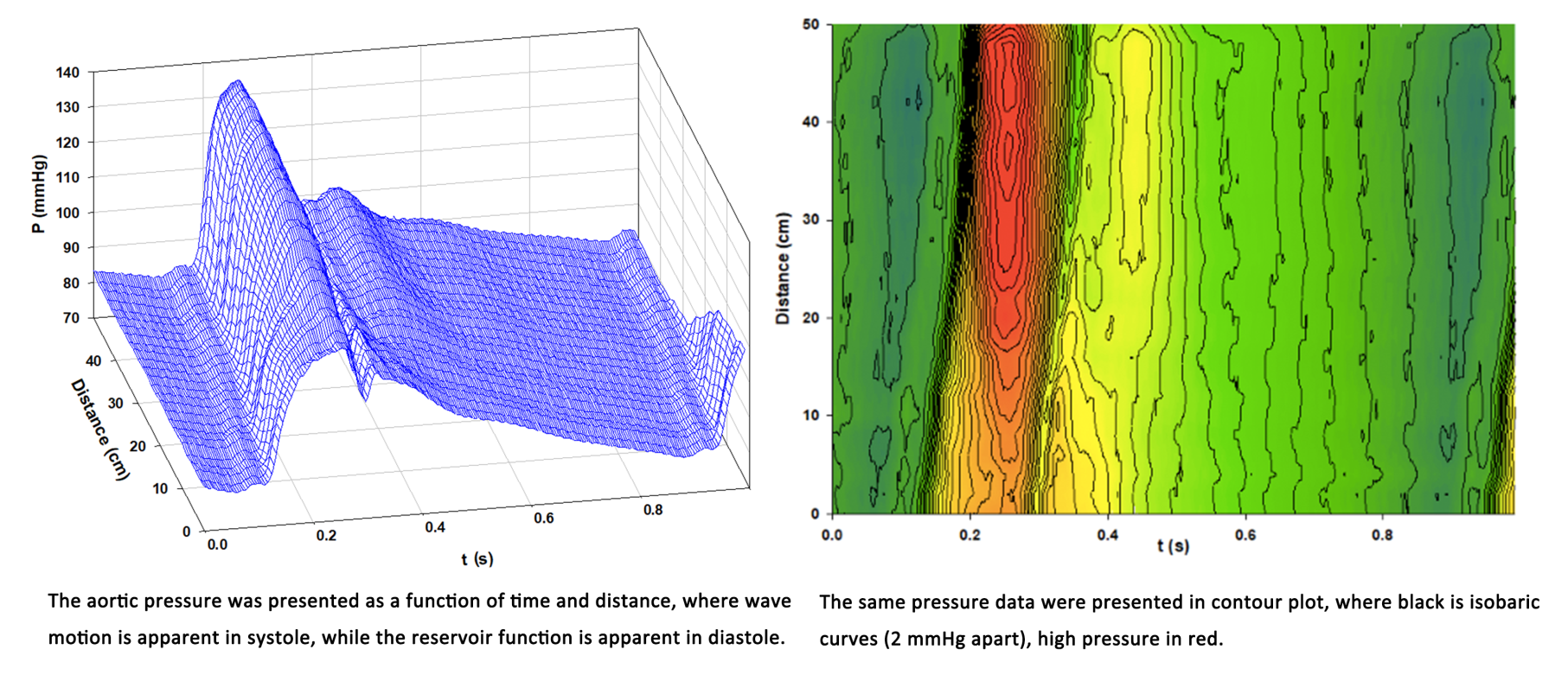Featured Scientist
Jiun-Jr Wang, Ph.D.
Associate Professor
Application of Scientific Principles in Conjunction with Advanced Technology to Solve Physiological and Pathological Problems
In face of new challenges of 21 century medicine, we have established a multi-isciplinary team, incorporating medicine, computer science, engineering and technology to improve fundamental physiology, to provide more efficient and more accurate tools in disease detection and diagnoses, to tackle prevalent diseases in modern aging population, notably vascular calcification and cognitive impairment and dementia. Our first and foremost finding was that of the reservoirwave model for systemic arterial and venous and pulmonary circulation. The reservoir-wave model, as demonstrated on figures, is a novel hemodynamic model. For more than half a century, arterial hemodynamics was understood as purely a wave system, and the aortic waveforms were analyzed exclusively by means of the impedance analysis in frequency domain, by which the aortic pressure and flow waveforms were separated into a constant mean value and a oscillatory component, which in turn can be further decomposed into multiple sinusoidal wave of harmonics. However, there were several apparent anomalies that cannot be explained properly, such as that oscillatory components decomposed from ectopic cardiac contraction have to compensate discontinuity yielded by the separation; moreover, classic wave separation along the aorta yielded a bizarre phenomenon of forward-going backward wave. The establishment of the reservoir-wave model was based on the understanding that systemic circulation functions as a conduit to conduct waves and a reservoir system, by which aortic system charges during systole and discharges during diastole essential to vital organ perfusion. The reservoir-wave paradigm has crucial implications in physiology and pathophysiology of systemic artery and venous and pulmonary circulations. We demonstrated that the reservoirwave model is the only hemodynamic model capable of interpreting all systemic arterial and venous and pulmonic waveforms consistently.
In clinical application, the reservoirwave paradigm has been demonstrated capable of extracting significantly more effective information; as such markedly improved the predictability of postoperative outcome. In contrast to traditional parameter, pulse wave velocity (Cf-PWV), the pressure-time area of excess pressure (XSPI), systolic (SC) and diastolic time constant (DC), the pressure-time area of reservoir pressure (PRI) are more efficient in predicting patients’ cognitive condition, by which proximal large arterial function, notable ascending aorta, was shown closely associated with cognitive function, and we showed that both XSPI and percent XSPI and SC yielded by the reservoirwave analysis are more effective than arterial stiffness or wave reflections in regulating vascular aging-associated cognitive dysfunction decline.
28 views

